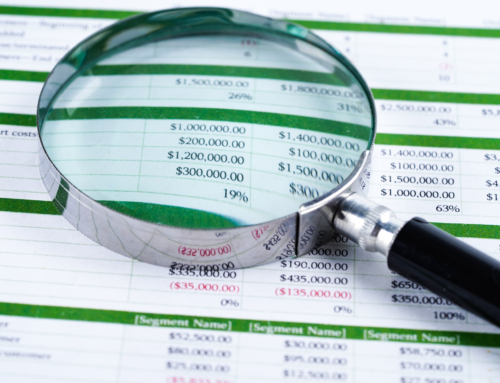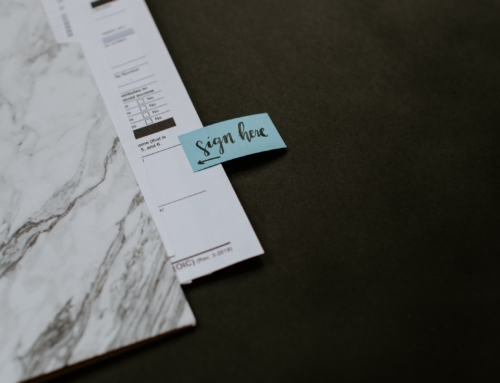You might be surprised to know it, but taxes are not only due April 15th. The IRS wants taxpayers to send in money throughout the year to keep the government running. Most people have their taxes sent in by their employers through deductions straight from their paychecks. But for those who have income from outside of a regular job, they might have to send in money directly to the IRS before the dreaded tax day in April. Quarterly tax payments are normally due on April 15th, June 15th, September 15th, and January 15th, but in 2020, the first and second quarterly tax payments were pushed back to July 15th.
Paying Quarterly Taxes Can Be Beneficial
Quarterly taxes can be beneficial in that you do not pay an entire year’s worth of taxes all at once. By spreading the payment out in installments, you can better match the payment to your cash flow, and if need be, make an adjustment in the later quarters for a down year. The good news is, if you are projected to owe less than $1,000 you do not have to worry about estimated tax payments. You can wait until the last minute to pay the amount due in full. However, if you will owe more than $1,000 you might need to pay estimated tax payments to avoid the underpayment penalty.
Underpayment: What You Should Know
The penalty for the underpayment of estimated tax is updated quarterly by the IRS and is currently at 5% compounded daily for the first and second quarters of 2020. Form 2210 calculates how much of an underpayment you’ve built up each quarter. In its simplest form, the IRS takes what you owe and divides by four to calculate your estimated tax payments. You are assessed a penalty on each quarter you underpay. Paying larger quarterly payments in the beginning of the year is better than paying larger payments at the end of the year as you could have an underpayment in the first and second quarters and overpayments in the third and fourth.
To help individual taxpayers, there are two safe harbors for calculating how much your quarterly estimates should be.
- The first safe harbor is to pay 110% of the prior year tax (for those with income below $150,000 the safer harbor is only 100% of the prior year tax). By paying this amount, you do not incur the estimated tax underpayment penalty. This method is beneficial when you have a large increase in taxable income this year compared to last year. You can hold onto your cash a little longer while paying the minimum quarterly estimates throughout the year.
- The second method is to pay 90% of the current year’s taxes. This method is best for those who know that they will have lower tax due this year when compared to last year. This encourages taxpayers to submit quarterly payments that will roughly equal for the year what they project their tax to be.
Let’s say that you started a new business and you have a small profit for the first year that makes your total taxes for the year total $10,000. Next year you can see the revenue of your company tripling but you don’t know how much the tax will be. You can set your quarterly estimates to be 110% of your prior year taxes of $10,000. You would pay in a total of $11,000 or $2,750 a quarter, to be within the safe harbor range. When tax time comes around, your total bill comes out to be higher at $25,000, you can make the additional $14,000 payment with no penalty as long as the payment is made by April 15th.
Continuing on with the scenario, over the next three years your business keeps growing right until there is a downturn in the economy. This year you will not make as much and so you want to cut back your quarterly estimates to save money now. Last year you paid $35,000 in taxes. Based on your accountant’s projections, you think you will only owe $10,000 this year. You reduce your quarterly payments so that the total will be $9,000 to avoid any underpayment penalties for the year as long as your total tax comes in at $10,000 or less.
What To Do for Fluctuating Income
For taxpayers with widely fluctuating income from season to season, they can calculate their quarterly payments using an annualized method, so that when there is a low quarter, the estimate is lower, and when the income is higher, the estimate is higher. This method is great for taxpayers with businesses that are highly seasonal. The two safe harbors still apply for the total amount of taxes paid during the year, but this annualized method helps taxpayers better match their tax payments to their cash flow cycles.
With proper planning, you can map out how you will pay your estimated tax payments over the next year and provide yourself with peace of mind by knowing that you will not be surprised by a large unexpected tax bill come tax day.
At Abacus CPAs, our focus is you! We believe that our employees and clients deserve to interact in an environment that fosters growth, trust, and confidence. Our team focuses on tax, accounting, audit, and business consulting to partner with you and your business. Abacus professionals provide leadership by relentlessly pursuing the best guidance possible so those we serve can make smarter decisions.
You can learn more about the topic in this blog by contacting us. We are here and happy to help! Call us today at 417-823-7171, find us on Facebook, LinkedIn, and Twitter, or visit our website www.abacuscpas.com to learn more.









